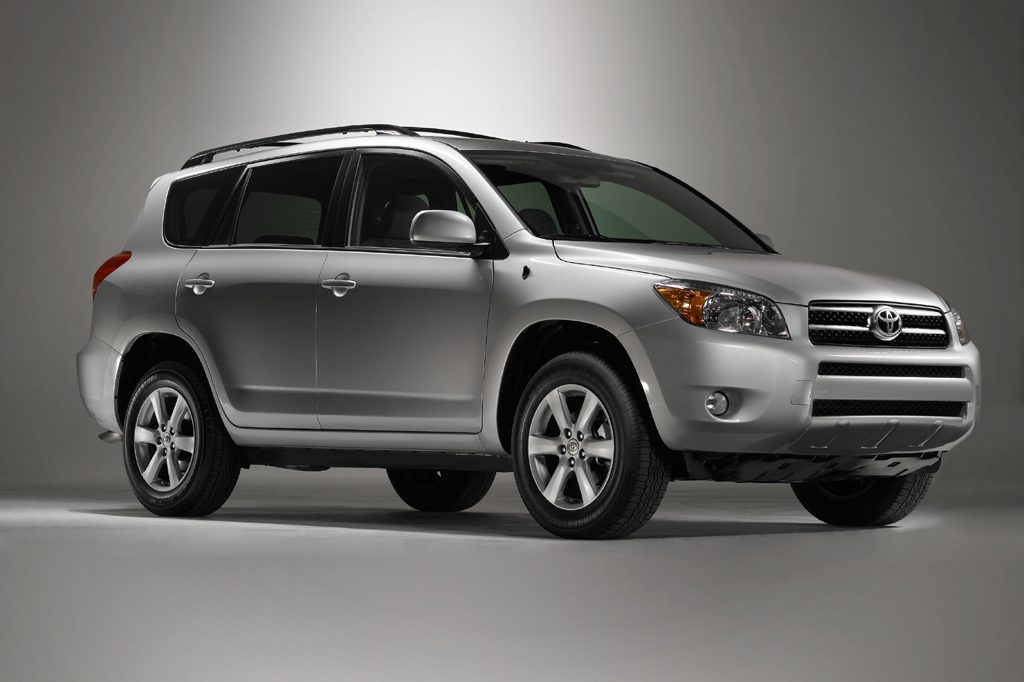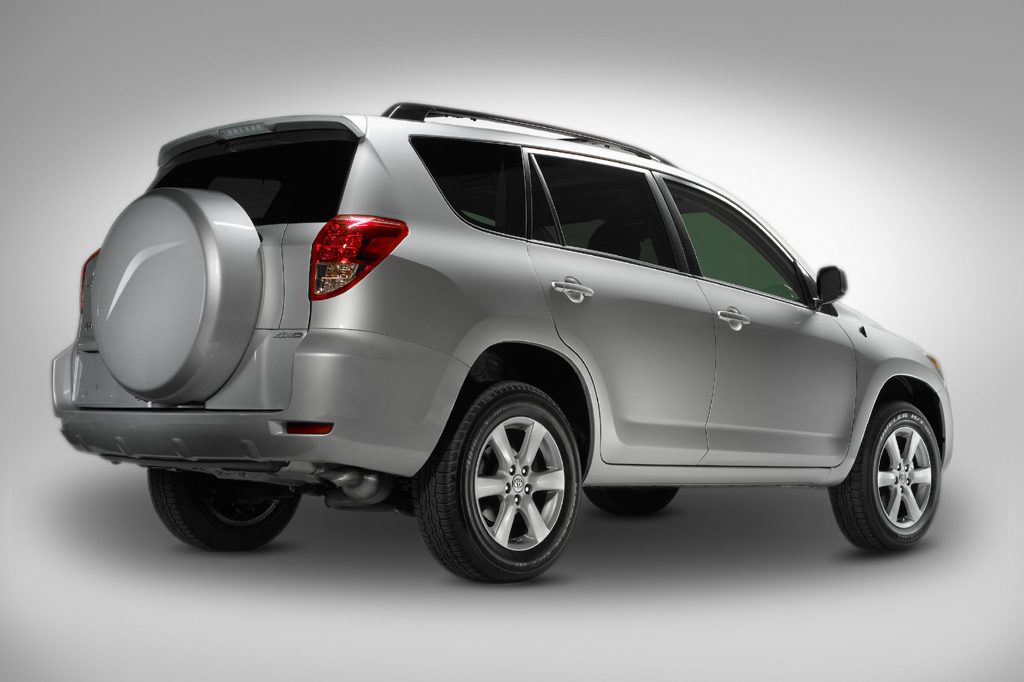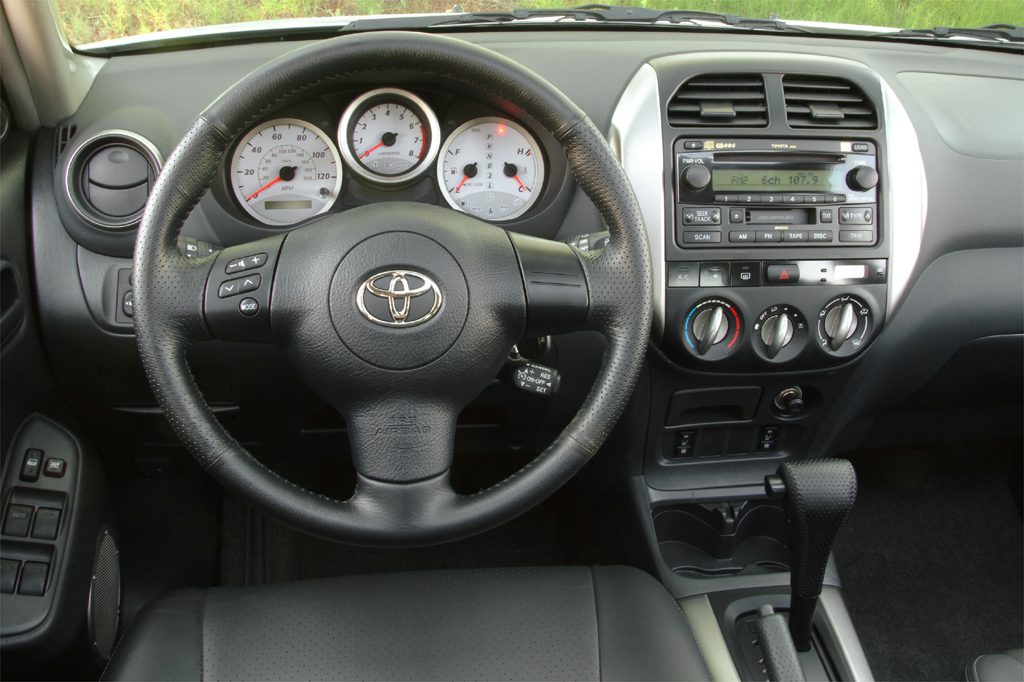| Compact SUV; Built in Japan |
|
|
| Good condition price range: $10,000 – $25,000* |

2006 Toyota RAV4

2006 Toyota RAV4

2006 Toyota RAV4

2006 Toyota RAV4
| Pros: |
|
| Cons: |
|
Available with the most powerful engine is the compact-SUV class and seating for seven, augmented by impressive cargo room, refinement, ergonomics, and road manners, RAV4 is simply a standout. Toyota’s reputation for reliability is another asset, but strong resale value keeps secondhand prices quite high. Addition of V6 power was a welcome improvement, and the optional third-row seat is a compact-SUV first.
Overview
Toyota redesigned its compact sport-utility vehicle for 2006, with new styling, up to 269 horsepower, and available third-row seating. That change made it the only seven-passenger vehicle in its class. Compared to the prior generation, the 2006 version gained 6.7 inches in wheelbase, 14.5 inches overall, and measured 3.2 inches wider.
The new RAV4 came in base, Sport, and Limited models. Each was available with front-wheel drive or all-wheel drive. The AWD system did not include low-range gearing, but could be locked into a 55/45 front/rear torque split.
A 2.4-liter four-cylinder engine continued, now rated at 166 horsepower versus the previous 161. Available for the first time was a V6 engine: a 3.5-liter producing 269 horsepower. Both engines came only with an automatic transmission; a four-speed with the four-cylinder, and a five-speed with the V6.
Antilock four-wheel disc brakes and antiskid/traction control were standard. Front-drive versions came with a limited-slip differential. AWD V6 and seven-seat four-cylinder models had hill ascent control to avoid sliding backwards, and descent control designed to limit speed when traveling down steep slopes.
Base four-cylinder RAV4s had 16- or 17-inch wheels, while V6s had 17s. The Sport had 18-inch wheels, a sport suspension, and unique trim.
Available on all models were front side airbags and head-protecting side airbags that covered the first two seating rows and included rollover deployment. Standard seating was for five occupants. Base and Limited models could seat seven via a two-place third-row seat that folded flush with the cargo floor. The folding second-row bench was split 60/40, moved fore/aft to adjust legroom, and included a reclining seatback.
Sport and Limited models were available with a sunroof. Options exclusive to Limited included leather upholstery, heated front seats, and rear DVD entertainment. RAV4 rivals included the Ford Escape, Honda CR-V, Hyundai Santa Fe, Mazda Tribute, and Mitsubishi Outlander.
Yearly Updates
| 2007 RAV4 Front side airbags and curtain airbags became standard instead of optional on all RAV4 models. A wireless cell phone link was newly optional. |
| 2008 RAV4 RAV4 was unchanged for 2008. |
| 2009 RAV4 A 179-hp 2.5-liter 4-cylinder replaced a 166-hp 2.4-liter four as the base engine, and all RAV4s received slightly freshened exterior styling. |
| 2010 RAV4 The 2010 Toyota RAV4 was largely unchanged. |
| 2011 RAV4 The 2011 Toyota RAV4 was largely unchanged. |
| 2012 RAV4 An all-electric version was added to the 2012 Toyota RAV4 lineup, but the gas models returned with few changes. The new RAV4 EV was surprisingly close to its gas-powered siblings in most regards, but was only offered with front-wheel drive and five-passenger seating. Furthermore, it was only sold in California, at least during its first year. Even though RAV4 was redesigned for the 2013 model year, the RAV EV continued using the 2012 model’s design through 2014. |
